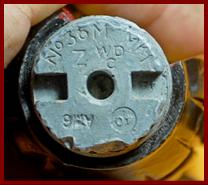
|
Japanese External Reverse Porro Prism Binoculars. WEBSITE MUSEUM |
|
OTHER BINOCULARS #6 & OPTICAL SIGHTS (MOSTLY MILITARY) |
|
Taylor Optical Factory Manufactured 7x35 Cutaway Binoculars |
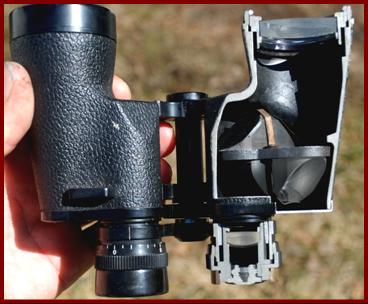
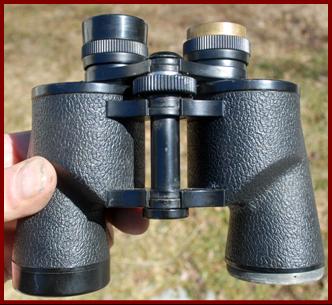
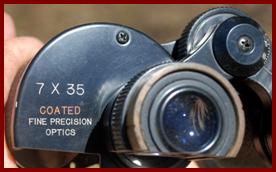
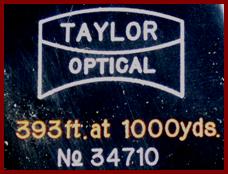
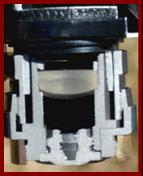
|
WANTED TO PURCHASE FOR THIS MUSEUM: FACTORY CUTAWAY BINOCULARS. Contact miniature.binoculars@gmail.com |
|
My Taylor Optical 7x35 binoculars are a salesman sample or trade show factory cutaway custom machined in a way to show off it’s various internal components. |
|
Having worked in engineering and marketing in a lock manufacturer, gun manufacturer, and also as a manufacturer’s rep, including involvement with trade shows, sales meetings, and distributor meetings: I have been involved in the creation and use of cutaway products to show functioning internal mechanisms. Always rare and produced in small handful quantities, these were a visual way to promote new internal features before the advent of video, and were used as show, sales samples, or as engineering or training tools. Their design was always an engineering/ model shop challenge, and having also worked for a year as a lead machinist, I appreciate the challenge of milling while preserving all functions. I do have a good collection of cutaway padlocks, and collections of cutaway guns, locks, door closers, binoculars, and other cutaway sectioned items, plus clear case prison approved electronics. I personally always find these clever and interesting. |
|
Leitz Wetzlar WWII Bulgarian Military Cutaway Sectioned 6x30 Bidox Training ot Instructional Binoculars |
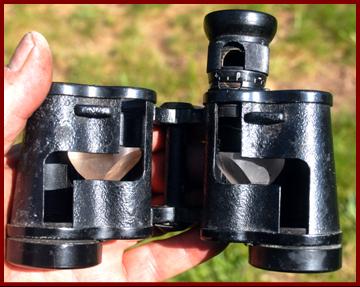
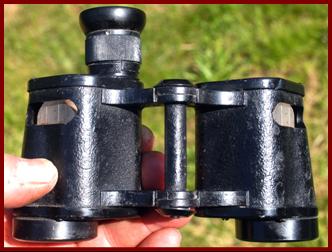
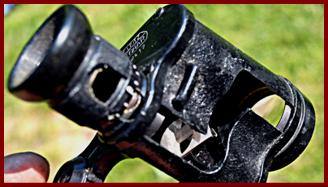

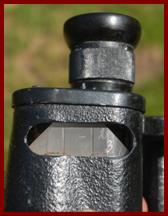
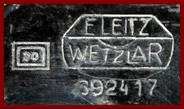
|
My E. Leitz Wetzlar 6x30 Bidox cutaway sectioned binoculars were obtained from Bulgaria. and were used in the Bulgarian WWII training program of military optical technicians. With WWII military mobilization, no country had enough binoculars or other military optics. Countries with existing binoculars and military and civilian optical manufacturing industries such as the US, UK, Japan, Germany and France expanded them and in many cases established new factories. They also used civilian requisitioned binoculars. Since those countries had no binoculars to spare for export, some other countries like Chile established new military optical industries. Most countries established military binoculars repair programs, and the Bulgarian program used cutaway sectioned binoculars for training technicians. The ocular is in a hand removable state (with one missing), rather than being in it’s normal captured fixation, which is likely for a hands on training creation where people are going to remove parts. The prisms are clearly pencil marked with settings, compatible with training in adjusting prisms, and commonly done in production. Leitz Bidox binoculars were produced from 1927-1953. The serial number of these Bidox binoculars seem to be outside of the normal expected serial number range of Leitz Bidox binoculars (greater) for unknown reasons. |

|
1917-1918 U.S. Navy Bureau of Navigation, U.S. Naval Gun Factory Optical Shop Annex Produced 10x45 Military Binoculars, after U.S. Navy seizure of the Crown Optical Co in Dec. 1917. S er #4152 |
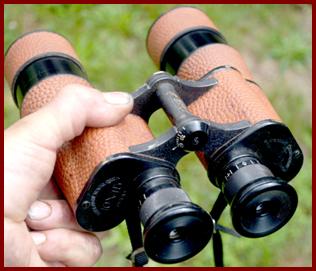
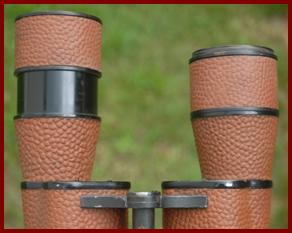
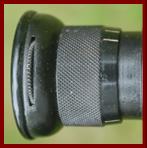
|
Wheel for yellow ocular filters |
|
Serial #4152 |
|
1918 U.S. Army Signal Corps 6x30 Military Binoculars produced by the U.S. Naval Gun Factory Optical Shop Annex Rochester NY , after U.S.Navy seizure of the Crown Optical Co. in Dec.1917. |
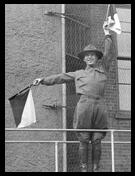
|
In WWI the US Army Signal Corps still used forms of visual signaling such as aerial telegraphy (wig wag flag signaling shown right) and heliographs (mirror based sun flash signaling). So they issued a lot of binoculars to their troops, such as my 6x30 binoculars with ocular filters manufactured by the US Naval Gun Factory Optical Shop Annex in Rochester NY in 1918, serial # 63319. |
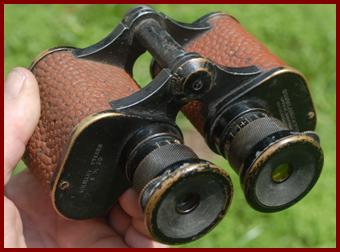


|
Goerz WWII Bulgarian Marked Military Cutaway\ Sectioned 6x30 Training/ Instructional binoculars |
|
Carl Zeiss WWII Bulgarian Marked Military Cutaway Sectioned 8x24 Training or Instructional Binoculars Цейс 8x24 учебен |
|
My Carl Zeiss 8x24 cutaway sectioned binoculars from Bulgaria. were used in the Bulgarian WWII training program of military optical technicians. These are marked in Bulgarian Цейс ( Zeiss) and учебен ( training or instructional) |
|
My Goerz 6x30 cutaway sectioned binoculars were obtained from Bulgaria. and were used in the Bulgarian WWII training program of military optical technicians. These are marked in Bulgarian Гьорц ( Goerz) and учебен ( training or instructional) |
|
Goerz WWII Bulgarian Marked Military Cutaway Sectioned 8x26 Training/ Instructional Binoculars, Гьорц 8x26 учебен |
|
My Goerz 6x30 cutaway sectioned binoculars were obtained from Bulgaria. and were used in the Bulgarian WWII training program of military optical technicians. These are marked in Bulgarian Гьорц ( Goerz) and учебен ( training or instructional), and markings differ from previous example. |
|
Busch Solluxon WWII Bulgarian Marked Military Cutaway Sectioned 6x30 Training or Instructional Binoculars 6x30 учебен |
|
My Busch Solluxon 6x30 cutaway sectioned binoculars were obtained from Bulgaria. and were used in the Bulgarian WWII training program of military optical technicians. In addition to the Busch factory markings these are marked in Bulgarian учебен ( training or instructional) |
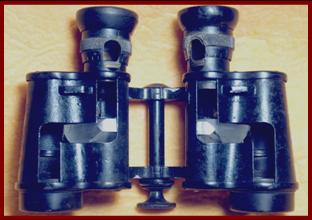
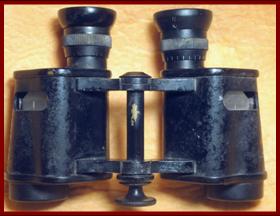
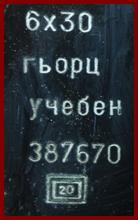
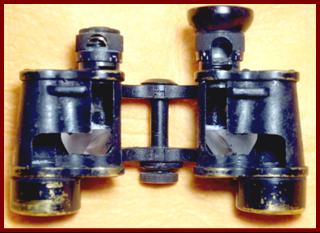
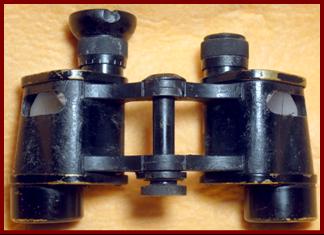


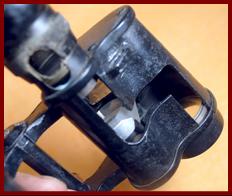
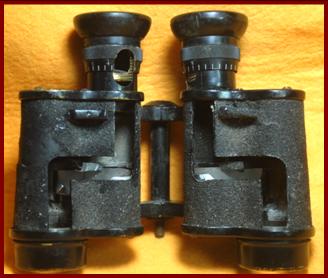
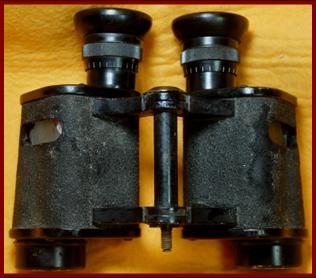
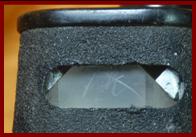
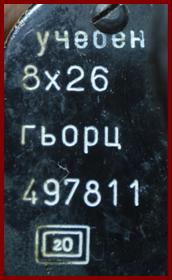
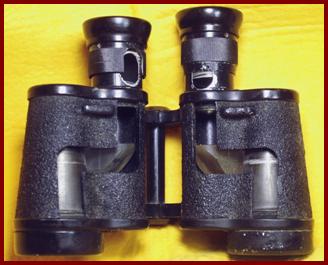
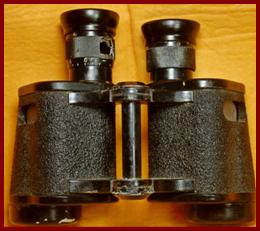

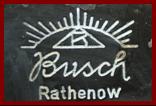

|
Carl Zeiss WWII Bulgarian Marked Military Cutaway Sectioned 6x30 Training or Instructional Binoculars Цейс 6x30 учебен |
|
My Carl Zeiss 6x30cutaway sectioned binoculars were obtained from Bulgaria. and were used in the Bulgarian WWII training program of military optical technicians. |
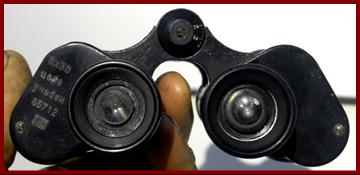

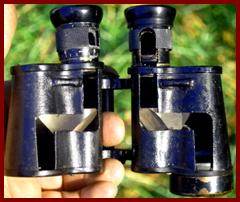
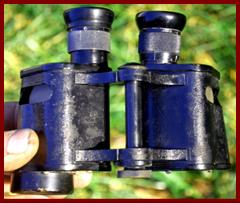
|
Huet French WWII Bulgarian Modified and Marked Cutaway Sectioned 8x30 Training or Instructional Binoculars ХЮЕТ 8x30 учебен |
|
My Huet 8x30 cutaway sectioned binoculars were obtained from Bulgaria. and were used in the Bulgarian WWII training program of military optical technicians. The Huet factory markings have been over marked by ХЮЕТ ( Huet in Bulgarian), and these are also marked in Bulgarian учебен ( training or instructional) |
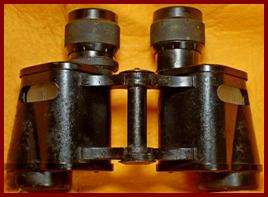
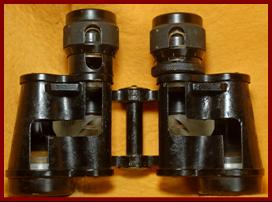

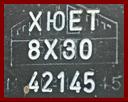
|
Goerz WWII Bulgarian Marked Military Cutaway Sectioned 8x26 Training/ Instructional Binoculars, second variation, Гьорц 6x30 учебен |
|
My Goerz 8x26 cutaway sectioned binoculars were obtained from Bulgaria and were used in the Bulgarian WWII training program of military optical technicians. These are marked in Bulgarian Гьорц ( Goerz) and учебен ( training or instructional) |
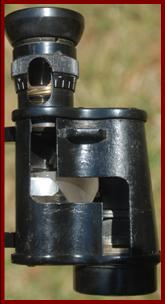
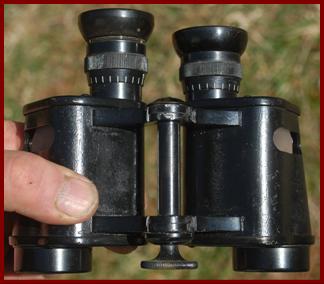
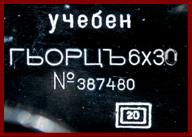
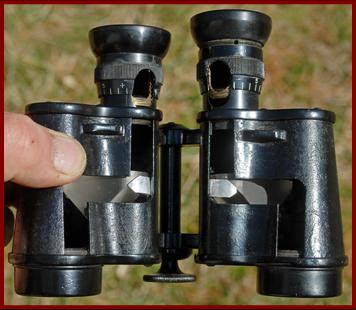
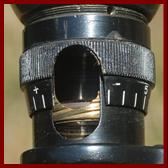
|
Small Sampling of Other Items in my Cutaway & Parts Visible Collections (with Parts Functional) |
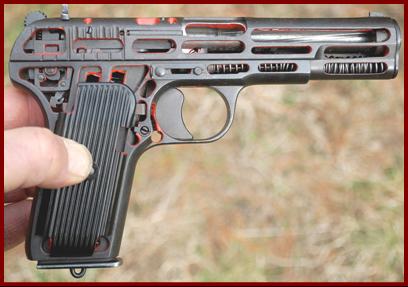
|
My 1953 Cutaway sectioned 762x25 mm instructional Polish army Tokarev Pistol, used for armorer training. |
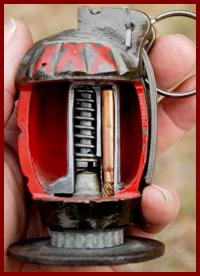
|
My TWO different WWII Cutaway sectioned instructional British #36 Mills hand grenades with rifle grenade bases |
|
My 1918 WWI Cutaway sectioned Webley Mk.VI. .455 British army armorer training pistol. |
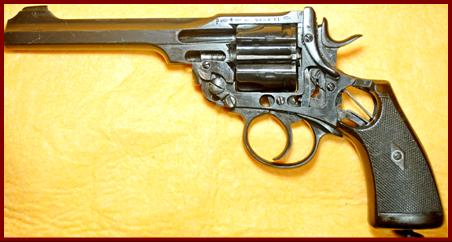
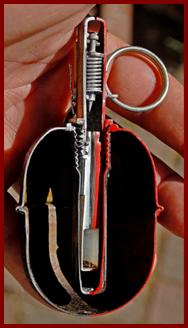
|
My Cutaway sectioned F1 Soviet hand grenade |
|
WWI 1918 U.S. Navy 3X Non Prismatic binoculars produced by the U.S. Naval Gun Factory Optical Shop Annex, Rochester NY , after U.S.Navy seizure of the Crown Optical Co. in Dec 1917. Ser.#20209 |
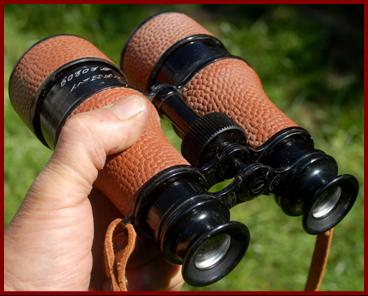
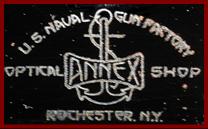
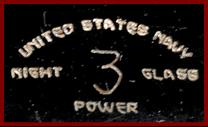
|
Created by the US Navy Dec. 15 1917 seizure of the Crown Optical Co., my U.S. Naval Gun Factory Annex Optical Shop 3 power Galilean non prismatic binoculars were made for the US Navy in 1918. They have an interesting gravity yellow filter system that drops down when the ocular barrel is rotated. This low performance optical design would have been familiar to 1860’s Civil War officers, but was obsolescent compared to 1914-1918 military prismatic binoculars, including those above. |



|
Two WWI 1918 U.S. Navy Bureau of Ordnance 10x45 binoculars produced by the U.S. Naval Gun Factory Optical Shop Annex, Rochester NY , after U.S.Navy seizure of the Crown Optical Co. |
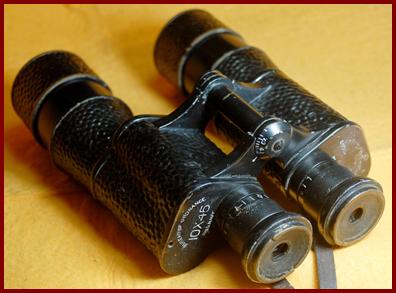

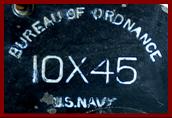
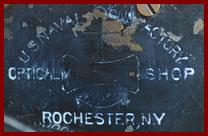
|
Created by the U.S. Navy Dec. 15 1917 seizure of the Crown Optical Co., my U.S. Naval Gun Factory Annex Optical Shop (Rochester NY) produced 10x45 binoculars were made for the US Navy Bureau of Ordnance in 1918. The Bureau of Ordinance existed 1862-1959 as the U.S. Navy organization that was responsible for the procurement, storage, and disposal of all U.S. naval weapons. My first pair of 10x45 binoculars have rotating yellow ocular optical filters for naval use, and both have sliding objective sun shields. The Rochester naval Gun Factory Optical shop annex closed in 1919. |
|
WWI 1918 U.S. Navy Bureau of Navigation 6x30 binoculars produced by the U.S. Naval Gun Factory Optical Shop Annex, Rochester, after U.S.Navy seizure of the Crown Optical Co. |
|
Created by the U.S. Navy Dec. 15 1917 seizure of the Crown Optical Co., my U.S. Naval Gun Factory Annex Optical Shop (Rochester NY) produced 6x30 binoculars were made for the US Navy Bureau of Navigation in 1918. The U.S. Navy Bureau of Navigation existed from 1862 to-1942, with activities ranging from charts, navigation research & instruments to Navy personnel management and assignment. My 6x30 binoculars have an elaborate rotating red ocular optical filters for naval use. The Rochester naval Gun Factory Optical shop annex closed in 1919. |
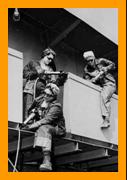
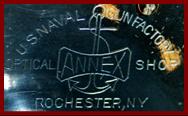
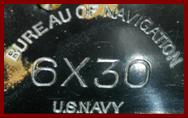
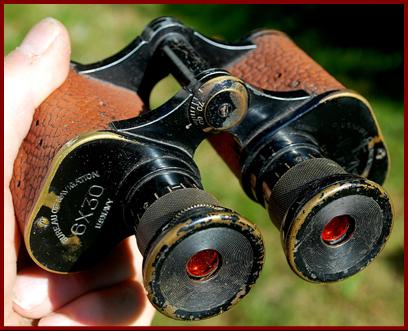
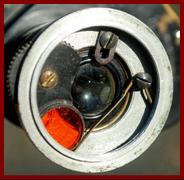
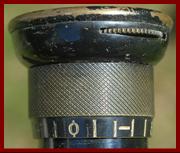
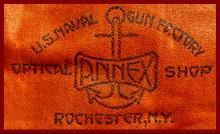
|
The carry case is U.S. Naval Gun Factory Optical Shop Rochester NY marked |
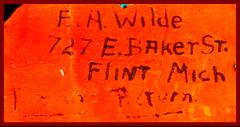
|
The case is marked with the address of a previous owner “F.H. White 727 E. Baker St., Flint, Mich Please Return” reflecting binoculars as a highly valued item at the time. I have not been able to find anything on the individual, based on the probab;y 1920’s marking. |
|
Military binocular cases are often marked with the maker. It raises the question if the Navy wartime ownership of the factory had a case production line. They could easily have, by simply ordering it be so. |
|
Mechanism of the rotating ocular filter |
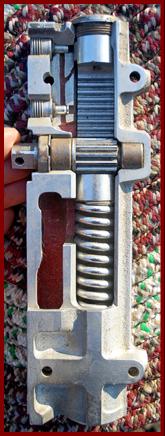
|
My Cutaway Sargent door closer |
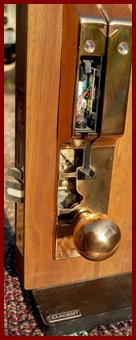
|
One of three Sargent cutaway hotel card locks I had ordered created for trade shows when I was director of that product line. |
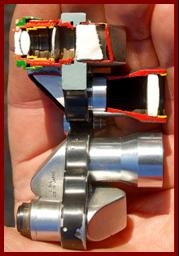
|
Cutaway miniature binoculars I made by hand. |
|
My Cutaway sectioned Crossman MK 2 air pistol, ex Beeman private airgun collection #160. |
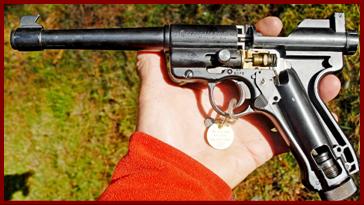
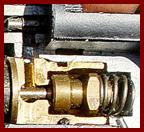
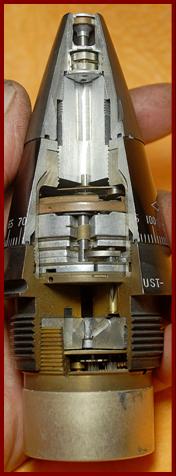
|
My Cutaway sectioned U.S. M365 timed 0-100 second clockwork detonator artillery fuse |
|
My second pair of US Navy Bureau of Ordnance 10x45 binoculars have had their rotating ocular optical filters removed. They have a stamping “No 316” of unknown significance on one cover, and serial # 47042 stamped on a frame arm. I think the US Navy Bureau of Ordnance specified black fabric on binoculars produced for them, whereas US Naval Gun Factory binoculars produced for the US Navy Bureau of Navigation and US Army Signal Corps used the brown fabric previously used on the Crown Optical Co. binoculars. |
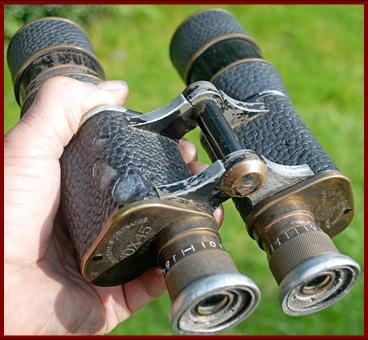
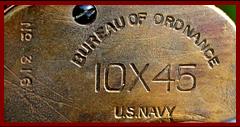
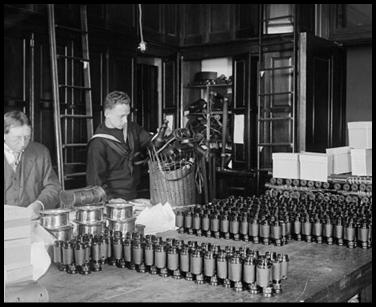
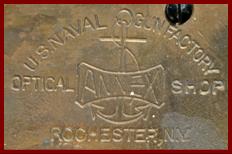
|
US Navy binoculars in WWI |
|
NON MINIATURE BINOCULARS & OPTICS: MOSTLY MILITARY |
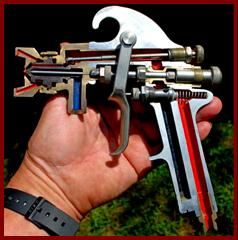
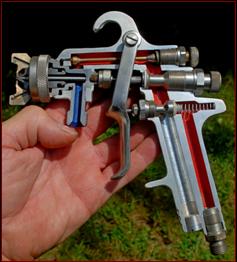
|
My TWO Cutaway sectioned model 18 and 62 Binks paint spray guns |
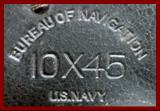
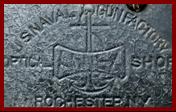
|
The Crown Optical Co. was producing the 5/14/1917 British binoculars contract, and had received and US military contracts for binoculars including a 4/22/17 contract to the US Navy for 1,000 10 power binoculars which was probably the contract for the binoculars above ($110,000), and #1573 of 8/21/17 ($750,000).According to the U.S. Navy Dept of Ordnance publication, the Crown Optical company was commandeered by the Navy Dept on Dec 15, 1917 to become the U.S. Naval Gun Factory Optical Shop Annex. If you issue a contract for nearly $16 million (2021 dollars) and 3 months later seize the co. and don’t have to pay ...is that a planned fiscal scheme??? |
|
Цейс means ( Zeiss) |
|
учебен means training |
![Text Box: CLICK ON PAGE LINE. CLIQUEZ SUR LA LIGNE DE PAGE. KLICKEN SIE AUF SEITENZEILE. HAGA CLIC EN LÍNEA DE PÁGINA..[ページ行]をクリックします。НАЖМИТЕ НА СТРОКУ СТРАНИЦЫ. ALSO SEE INDEX.](image851.gif)


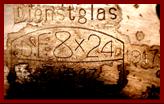
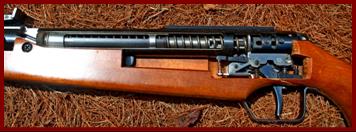

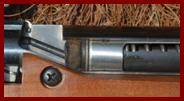
|
My Diana model 45 cutaway air rifle is one of a handful of Diana factory cutaway air guns I am aware of including 2 different model 75, 2 different model 27, two different model 45, and a model 10, 6, and 2. Some were known to have been displayed in the Diana factoy offices. |

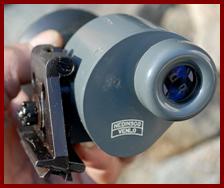
|
My pre WWI British army long lee Enfield cutaway: probably armorer’s training. |
|
Aus Jena (East German Zeiss) Factory Manufactured Nobilem 8x50 B Cutaway Binoculars |
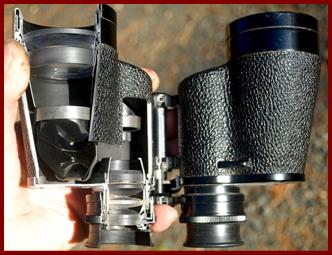



|
Post WWII Carl Zeiss firm in Jena was located in the Soviet zone and in 1946 it was nationalized as VEB Carl Zeiss Jena (Volkseiger Betrieb/ Peoples Enterprise) in Jena East Germany. Some Zeiss personnel moved to and formed Carl Zeiss Oberkochen in West Germany. There were 20 legal battles in countries over trademark rights to the Carl Zeiss name. In 1971 Zeiss Jena lost in the U.S. courts, and there was agreement to name rights worldwide. My Aus Jena cutaway was probably made for an advertisement. |
|
After 1971 Carl Zeiss Jena used Aus JENA in some counties on binoculars |


